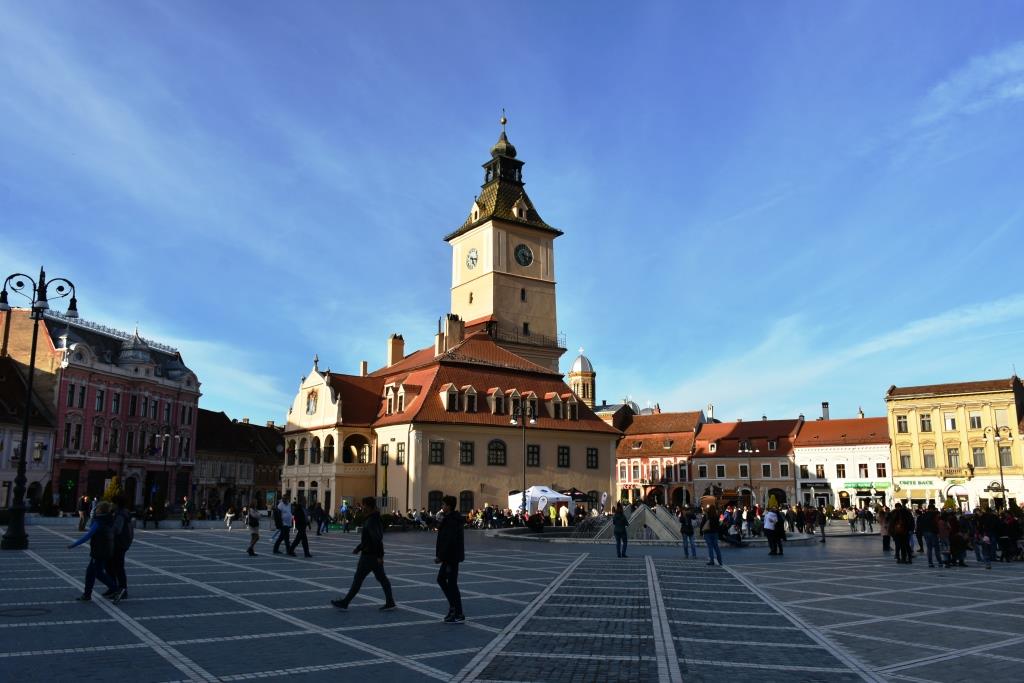Cobblestones Seen as Part of Our Heritage
Since humans first stood and walked on two feet, walking has been a very reliable means of transportation, maybe the most reliable. It is true walking was more difficult in the past and that gender, social status and even fashion played a huge role. Nowadays we rely on comfortable shoes and flexible soles that can carry us anywhere. Mobile phones, headphones, traffic, faces or buildings keep us from literally watching our step and see cobblestones, for instance.
After visiting Weimar, the answer to the above question came to mind. We can miss beautiful patterns and perfectly harmonised city centres if we forget to look down. Built heritage is held together by these carefully paved roads like skin holds our flesh. Numerous European cities are characterised by stone pavements. Great historical value and authentic appearance come along in each step you take.
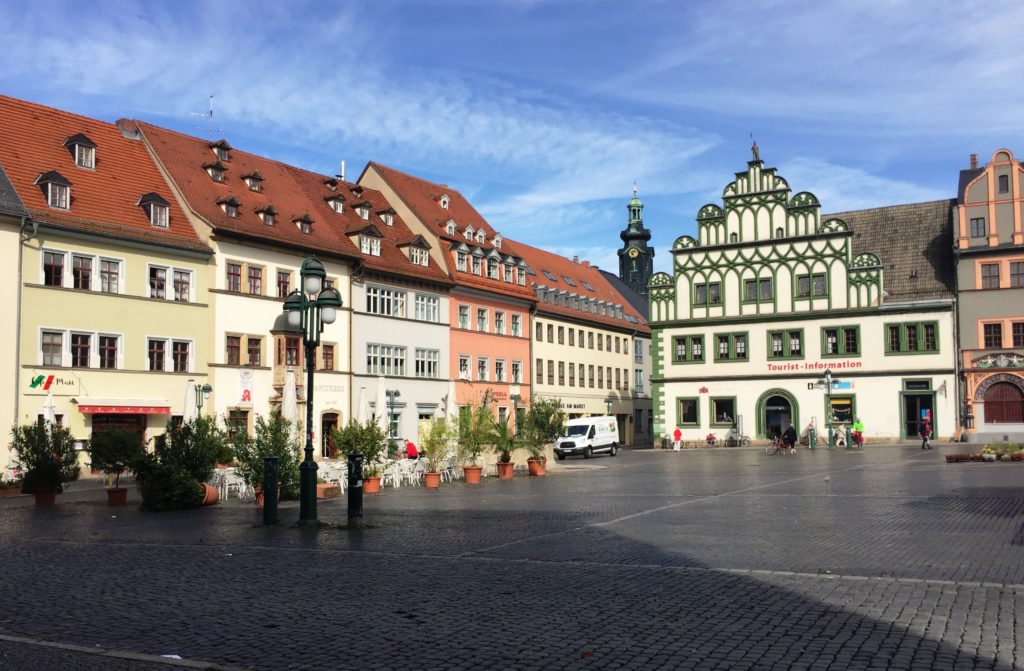
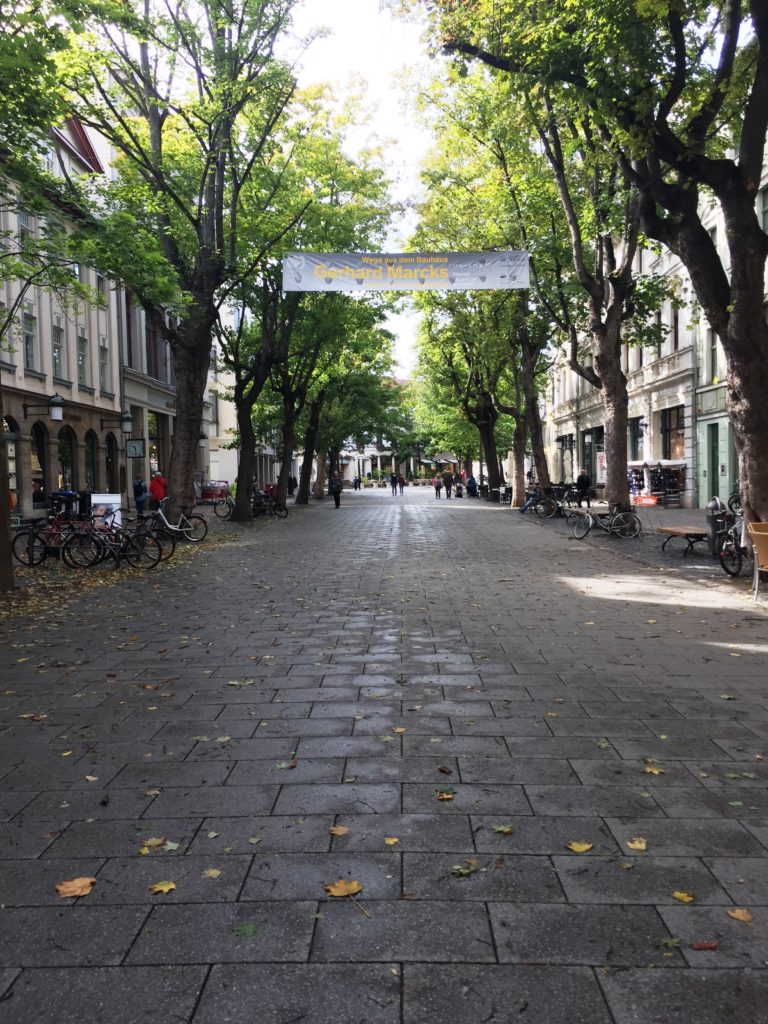
Before going into further details, let us remember what cobblestones are. These are stones used to pave large outdoor surfaces. Since this paving technique has been used since ancient times (Appian Way starting in Rome, or Pompeii) – by the Romans who first became preoccupied by the importance of usable roads all year round – one can think it has some advantages.
Well, this paved surface can be heavily used, plants do not grow in between setts because the cubes are typically set in sand, rain is rapidly absorbed for the same reason, and dirt cannot be retained due the smooth surface of the stone. In different times, horses got better traction on cobblestones. Originally, cobblestone meant “large, rounded beach pebble”. This pebble evolved into a sandstone, quartzite, basalt or granite cube, known as a sett.
One does not just set cobblestones. There are different patterns to doing that. The “irregular” pattern is self explanatory and very old. The “course” pattern relies on a longitudinal frame and is very popular. Quite frequently used in continental Europe is the “European fan” pattern. This one is by far the most intricate since it requires smaller cubes and since the “fan” opens as much as a man’s arm can reach from left to right. Another popular pattern in Continental Europe is the “Bogen” (“arch” in German). This comes as a radial pattern and is very sturdy since each cube relies on each other.

Weimar
There is hardly any asphalt in Weimar. Weimar was cobblestoned during the 19thcentury. A trip to the Municipal Museum proved this fact.
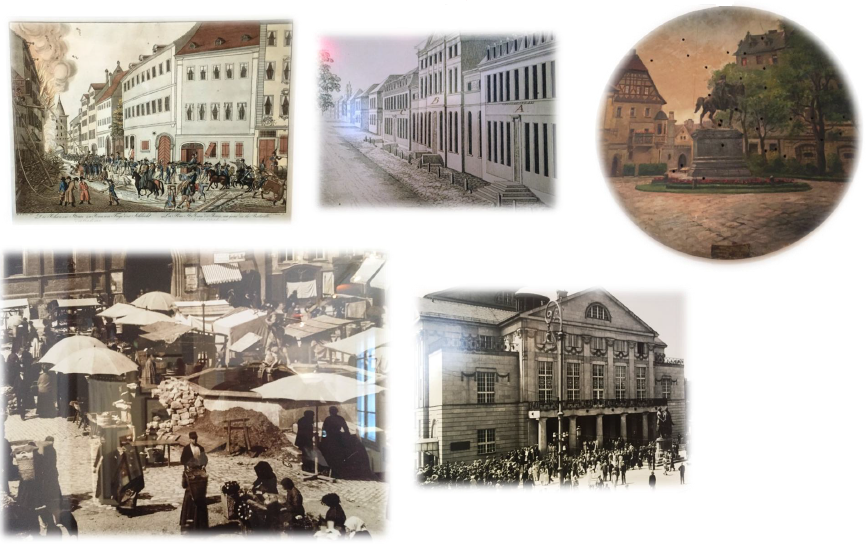
Weimar was designated European Capital of Culture in 1999. Keep in mind that even before this date, Weimar was considered a cultural destination. Right before 1999, some of the cobblestones were changed to increase accessibility in the city. European fan and Bogen patterns were used to replace original cobblestones. Municipality chose the same paving technique to preserve the sense of authenticity.
However, places in Weimar were also left intact. Internal courtyards are one example. Here the setts allow for drainage towards larger flat stones, which also offer routes for walking.
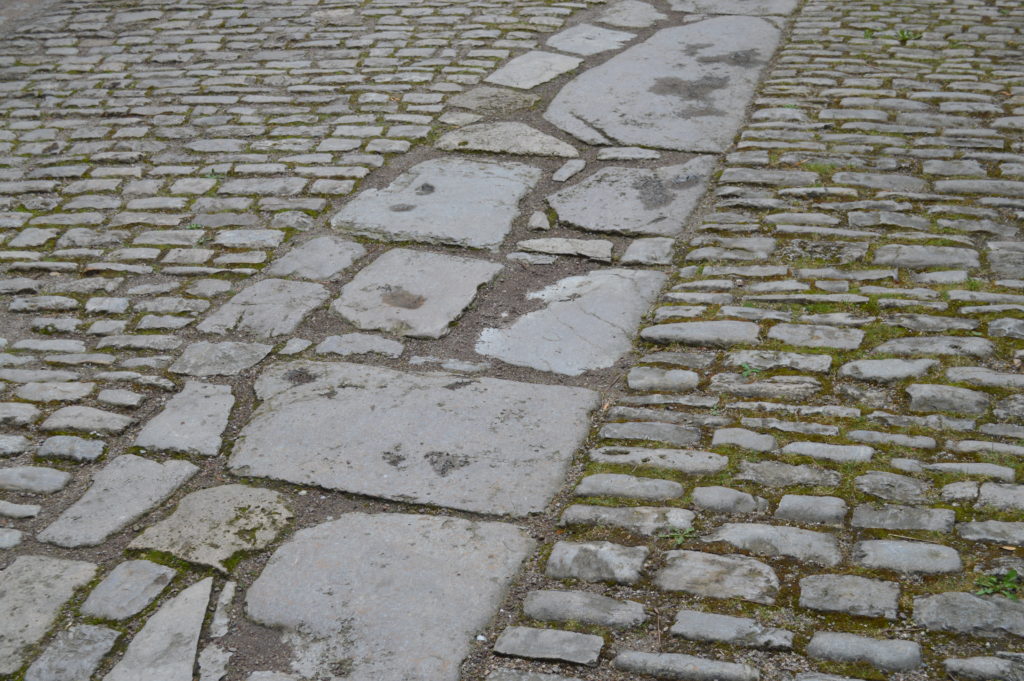
Weimar Castle is another example. Three different types of setts are encountered here. There is rectangular paving made of wooden blocks right after the draw bridge entrance, delicate “fan” and “course” patterns in the internal courtyard of the palace.
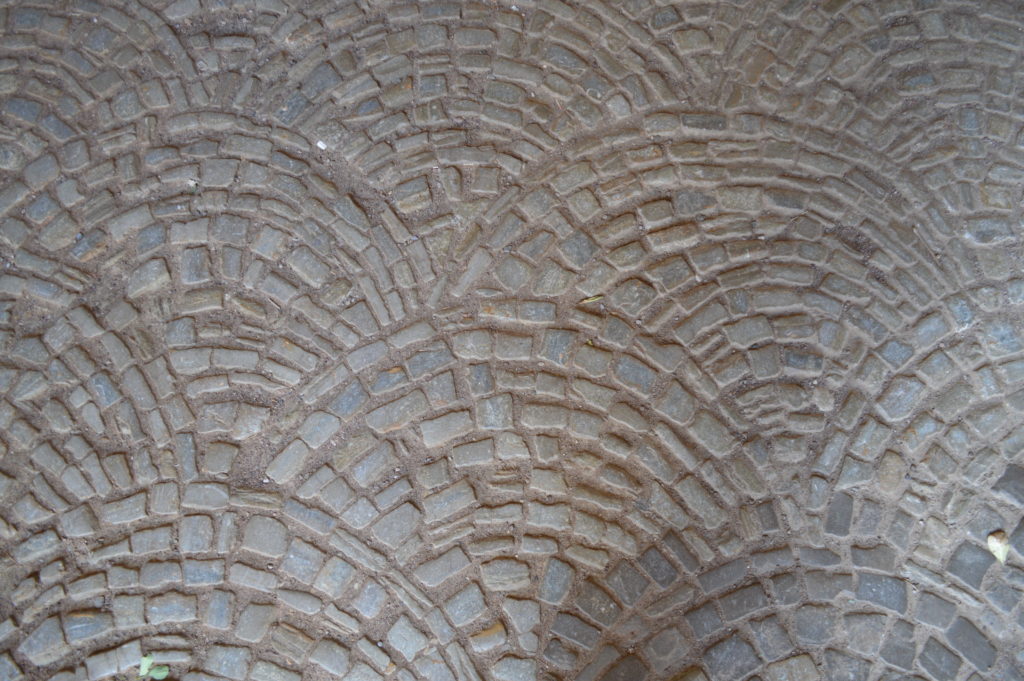
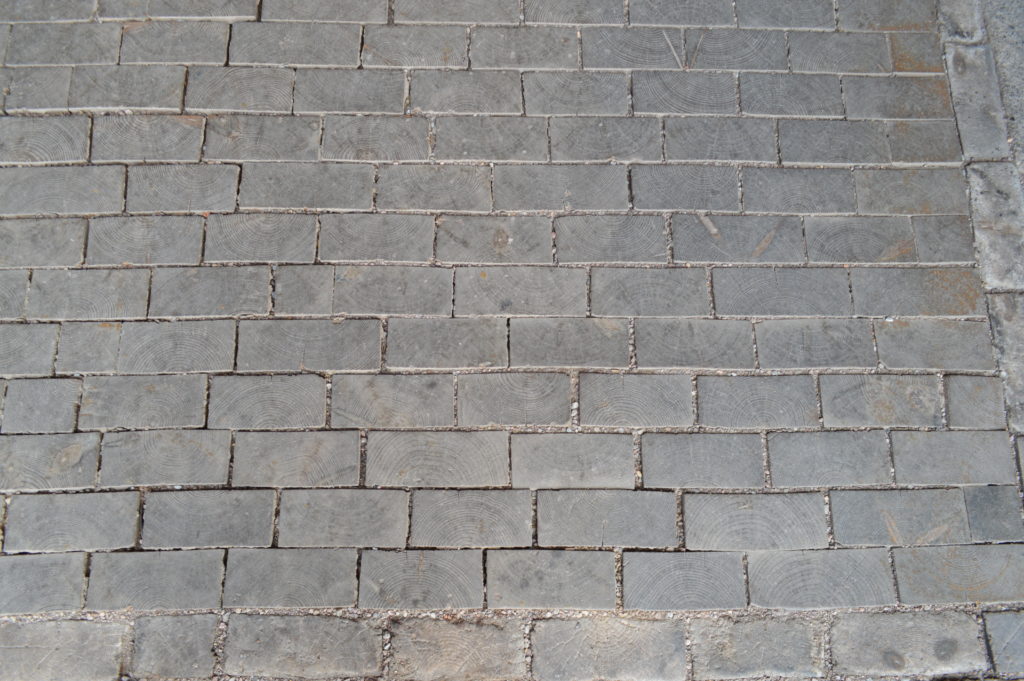
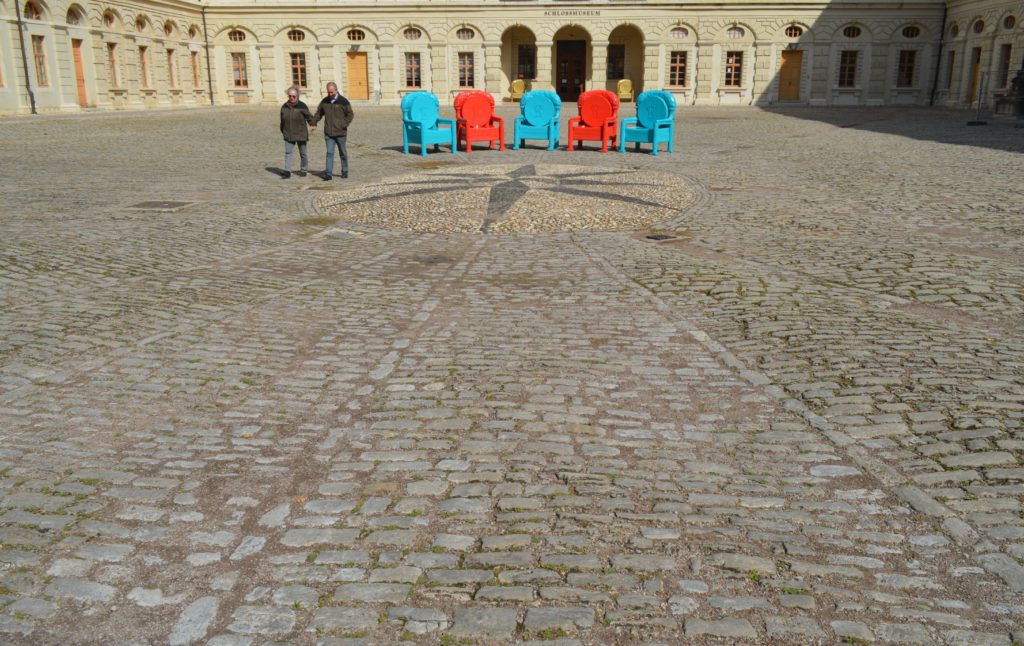
Brasov
In central Romania, Brasov (Kronstadt in German or Brasso in Hungarian) is surrounded by the Southern Carpathians and is part of the Transylvania region. There is rich history – with traces dating back to the Neolithic Age – characterised mainly by the presence of traders and craftsmen. The city has managed to preserve, especially in the centre, the features of a medieval town. In those times, the city was conveniently located at a crossroad of vital trade routes linking the Ottoman Empire and Western Europe. The local population (Romanians, Germans and Hungarians) accumulated wealth.
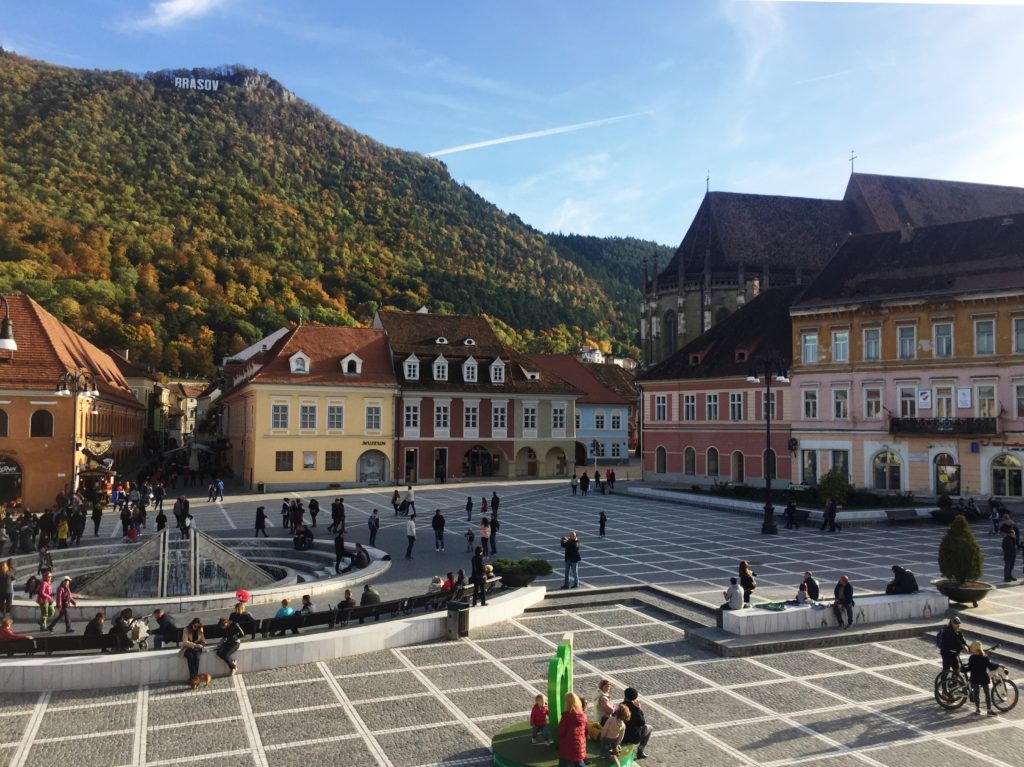
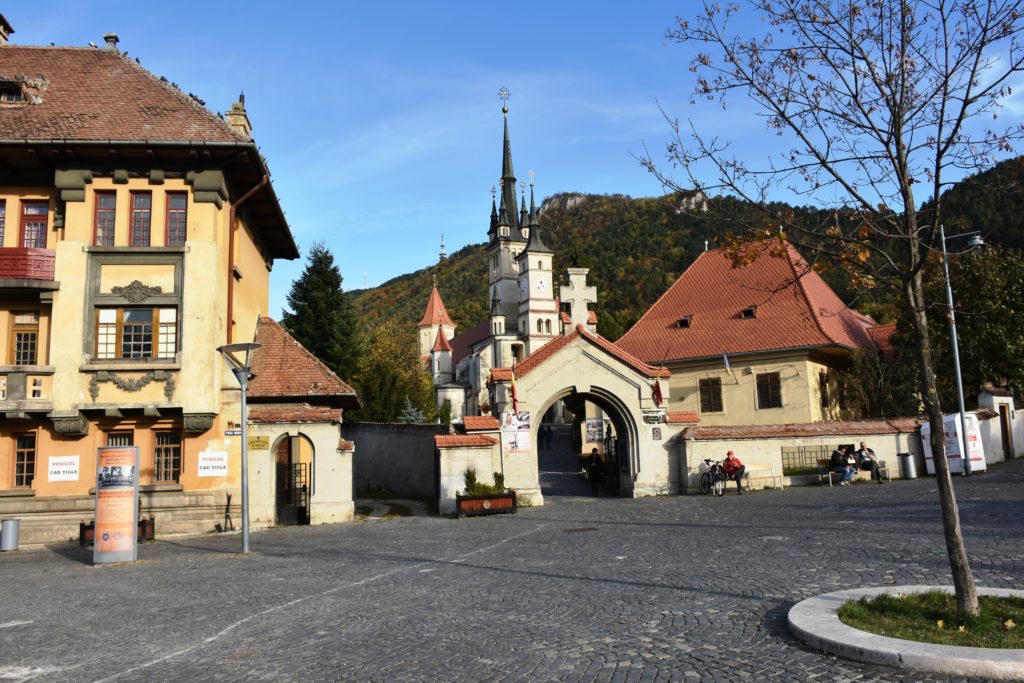
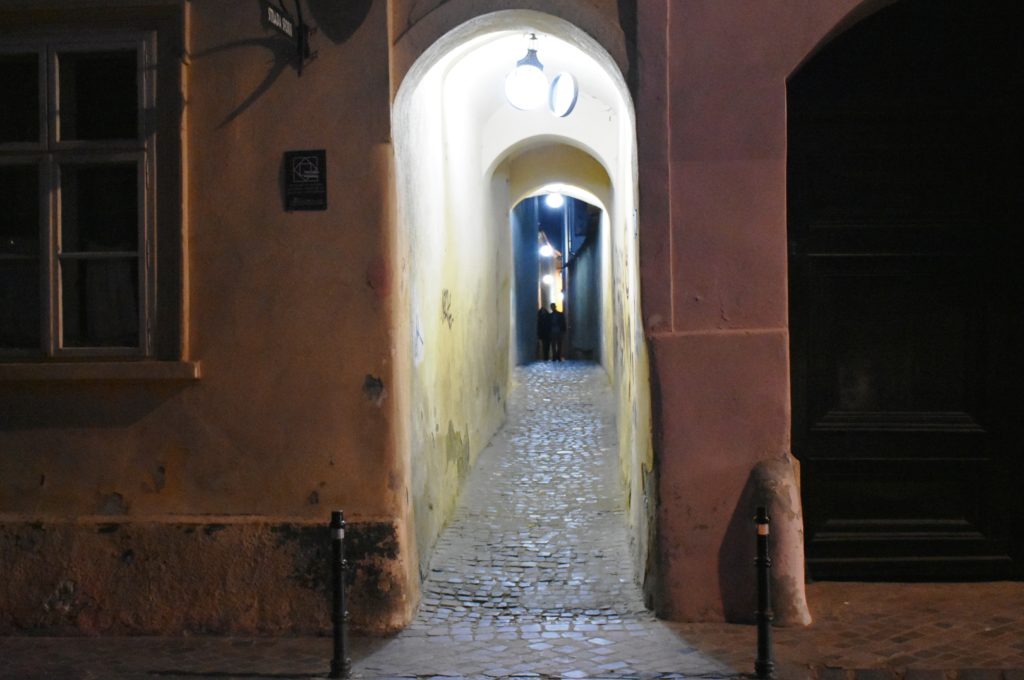
The history of paving in Brasov starts with gravel and wooden panels. Wooden panels survived even during the 20th century. After the Second World War, the cobblestone fashion was finally imported here. Western influence was obvious. There is proof that some parts of the city were cobblestoned before the Second World War. Below, there is a photo of Romanian soldiers during the First World War taken in the Council Square of Brasov. Course pattern is visible below.
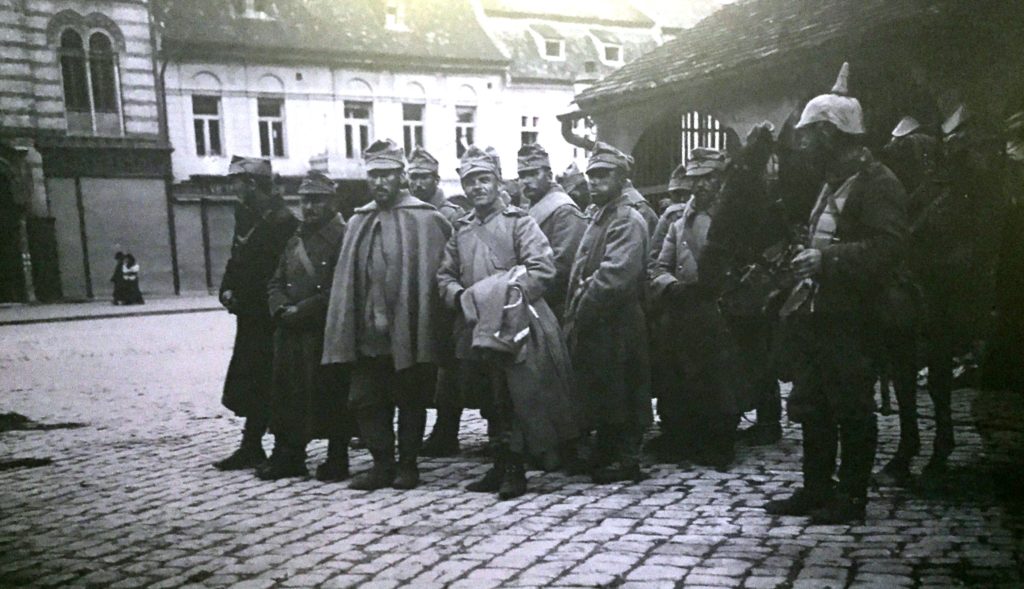
During the 70s, cobblestones were removed and replaced with asphalt. The cobbles were not discarded, but instead bevelled and moved to the historic centre. The pedestrian area of Brasov is mostly cobblestoned.
The Council Square, for example, has a rectangular architecture. Pedestrians are reminded this at each step. Smaller squares are drawn out of black granite and white marble.
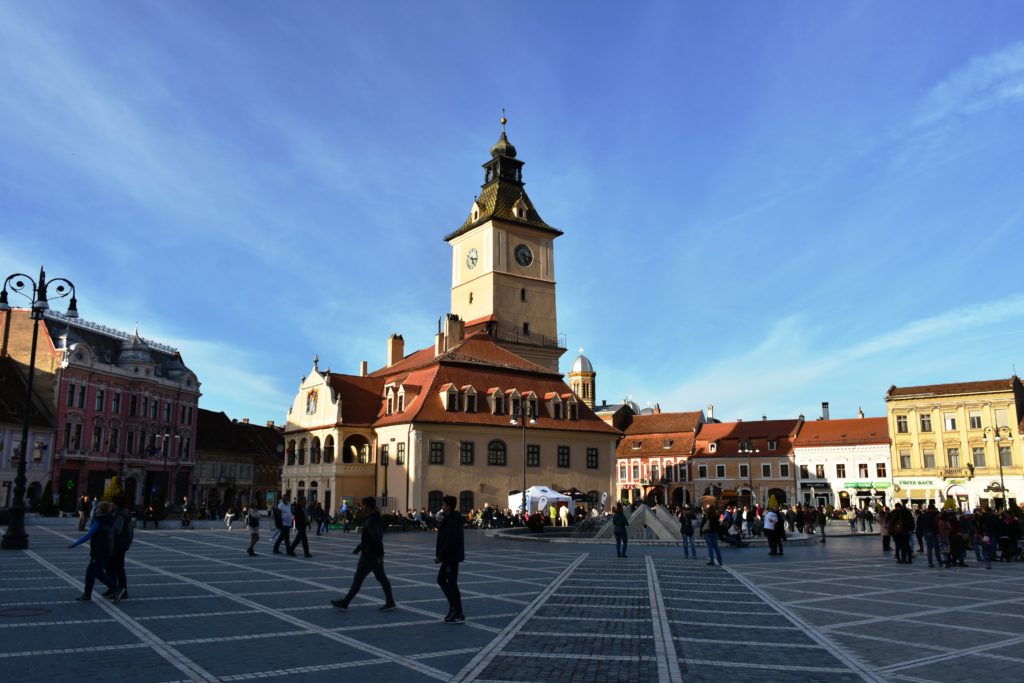
I was surprised to find a cobblestoned floor, not really a mosaic, on the second floor of Brasov County Museum of History (also known as the old Council House). This must have been inserted during a full restoration of the building during the 18th century (after the Great Fire of 1689). This particular building dates from the 15th century.
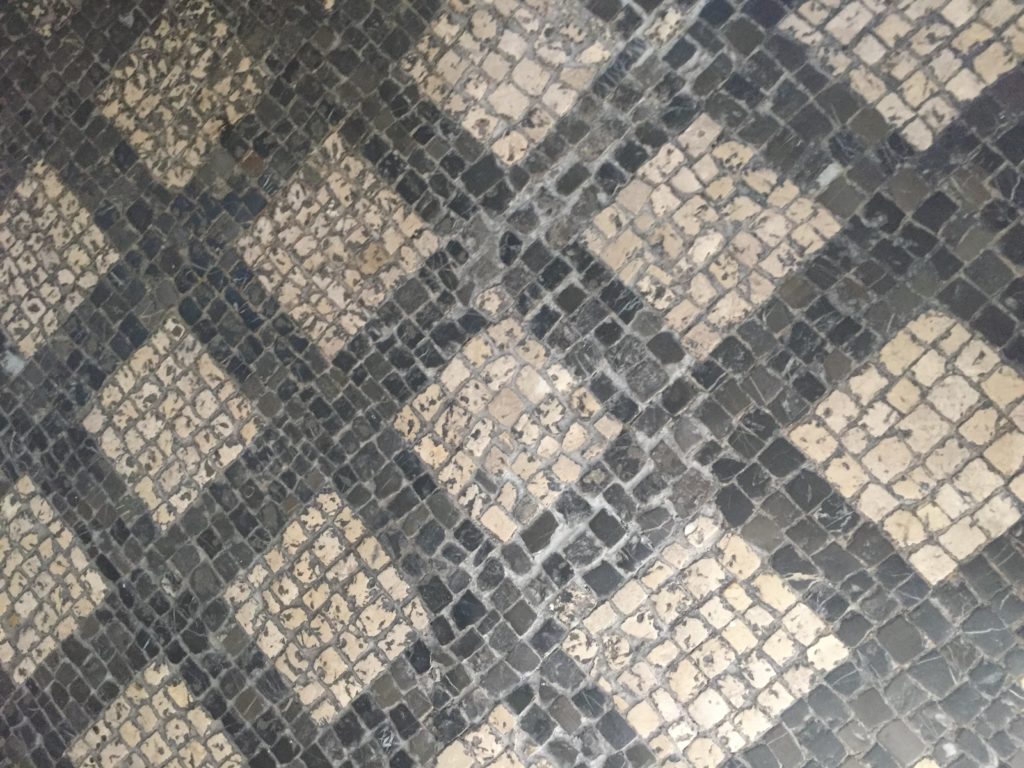
Authenticity is highly regarded in Brasov, so the Black Church, one of the main Gothic style monuments in the country, is surrounded by white gravel which also makes the black thick walls stand out.
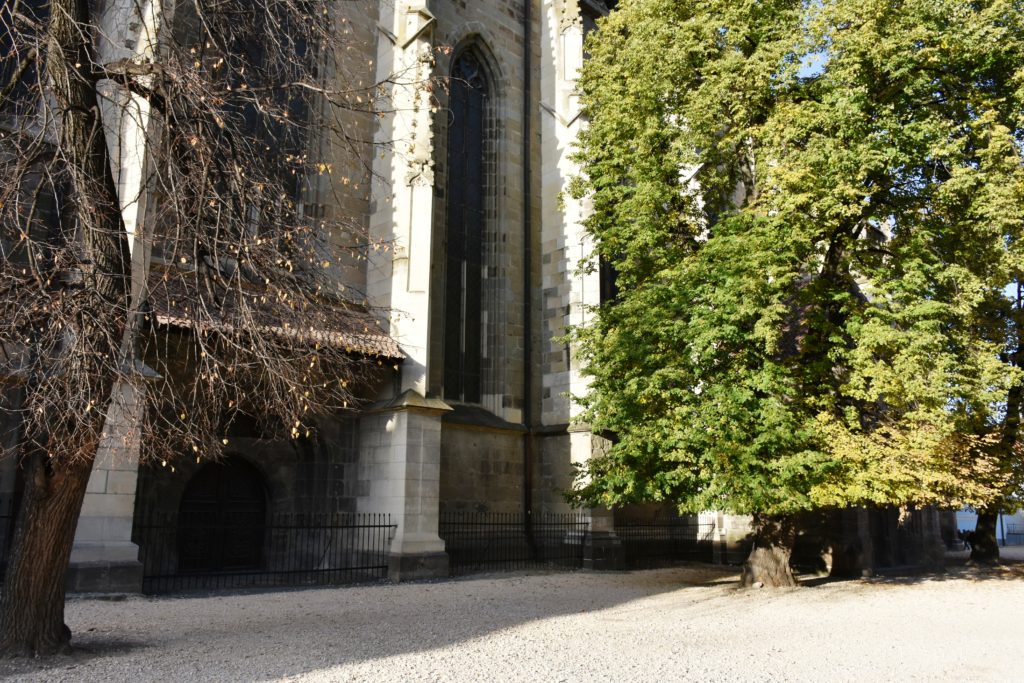
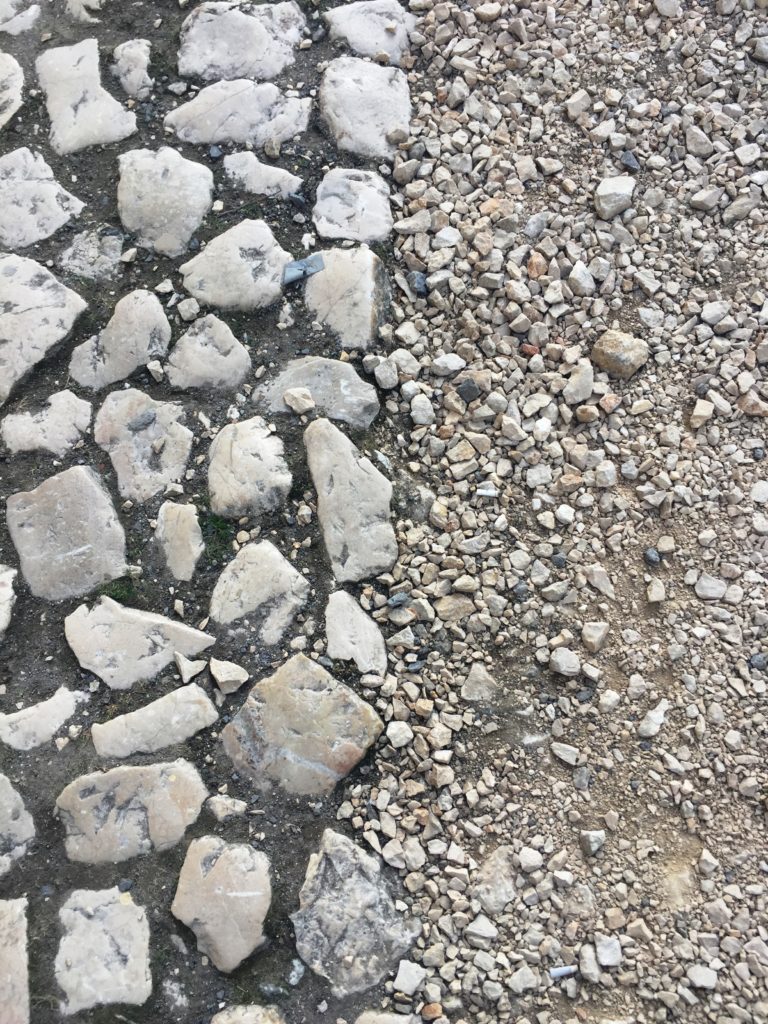
Special thanks for inspiration and information go to three museums: Weimar Municipal Museum, Brasov County Museum of History and Muresenilor House Museum in Brasov.
Try to imagine all the pictures above with plain asphalt. We can safely say that cobblestones play a significant role in preserving our cultural heritage. Even if in some cases only a few years or decades old, cobblestones in pavements, bridges and roads give us a sense of belonging.
So please mind your step!

